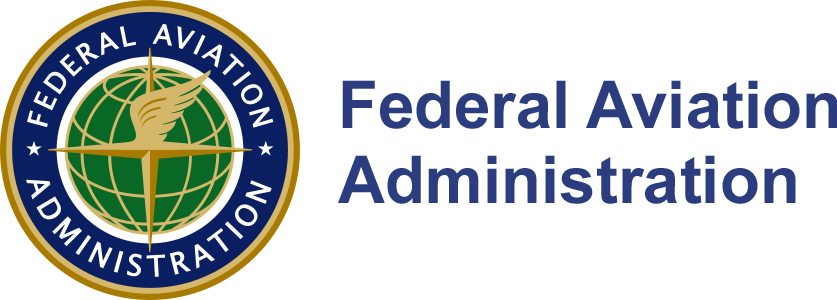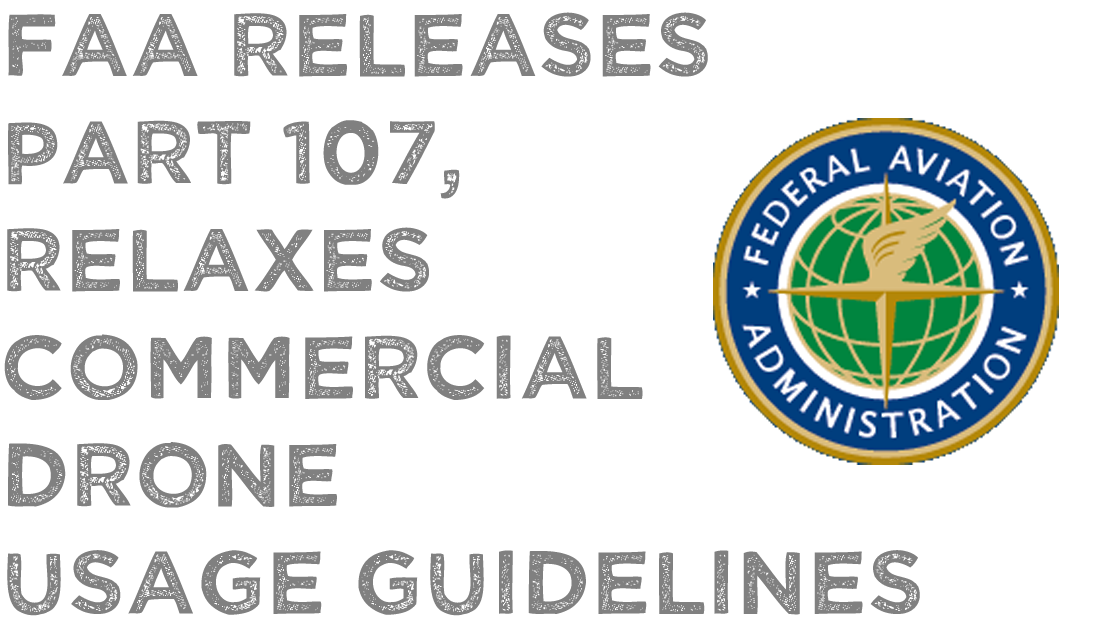FAA’s New Commercial Drone Rules Opens The Door To Make A Buck
 It seems the wait is over and those who are seeking a legal method of using a small drone for commercial purposes now have guidelines in which to operate. As released on June 21, 2016, it may come as a surprise to some that FAA appears to now embrace the use of drones for commercial purposes and seems to have simplified the path for those seeking to use these devices as a method of generating income.
It seems the wait is over and those who are seeking a legal method of using a small drone for commercial purposes now have guidelines in which to operate. As released on June 21, 2016, it may come as a surprise to some that FAA appears to now embrace the use of drones for commercial purposes and seems to have simplified the path for those seeking to use these devices as a method of generating income.
In this post, I’ll take the new FAA rules, break them down point-by-point and provide my interpretation on what each section means. Comments welcomed here or on your favorite drone forum.
Regulations will create new opportunities for business and government to use drones
Operational Limitations
FAA: Unmanned aircraft must weigh less than 55 lbs. (25 kg).
The Gadget Guru: Self explanatory.
FAA: Visual line-of-sight (VLOS) only; the unmanned aircraft must remain within VLOS of the remote pilot in command and the person manipulating the flight controls of the small UAS. Alternatively, the unmanned aircraft must remain within VLOS of the visual observer.
The Gadget Guru: VLOS: Visual Line Of Sight. The drone must remain within the line of sight of the operator.
FAA: At all times the small unmanned aircraft must remain close enough to the remote pilot in command and the person manipulating the flight controls of the small UAS for those people to be capable of seeing the aircraft with vision unaided by any device other than corrective lenses.
The Gadget Guru: Sorry, no goggles can be used.
FAA: Small unmanned aircraft may not operate over any persons not directly participating in the operation, not under a covered structure, and not inside a covered stationary vehicle.
The Gadget Guru: Don’t fly over people, nor indoors or inside a car.
FAA: Daylight-only operations, or civil twilight (30 minutes before official sunrise to 30 minutes after official sunset, local time) with appropriate anti-collision lighting.
The Gadget Guru: Sorry, no night flights. While I’m not positive what the FAA is stating by anti-collision lighting and at this time I’m interpreting this as meaning that the lights incorporated into today’s drones can not be obscured.
FAA: Must yield right of way to other aircraft.
The Gadget Guru: If you see another aircraft, get out of its way.
FAA: May use visual observer (VO) but not required.
The Gadget Guru: Simply stated a VO (visual observer) is a person commonly called a spotter.
FAA: First-person view camera cannot satisfy “see-and-avoid” requirement but can be used as long as requirement is satisfied in other ways.
The Gadget Guru: I’ll interpret as this meaning that FPV is okay, but not a substitute for keeping the drone within line of sight limitations.
FAA: Maximum groundspeed of 100 mph (87 knots).
The Gadget Guru: Self explanatory.
FAA: Maximum altitude of 400 feet above ground level (AGL) or, if higher than 400 feet AGL, remain within 400 feet of a structure.
The Gadget Guru: Don’t fly higher than 400 feet above ground level. Interpretation: If inspecting a building that may exceed 40 stories or a tower (for example) as long as the drone remains within 400 feet of that structure, it’s okay to fly.
FAA: Minimum weather visibility of 3 miles from control station.
The Gadget Guru: Don’t fly in foggy or cloudy situations where visibility is less than three miles.
FAA: Operations in Class B, C, D and E airspace are allowed with the required ATC permission.
The Gadget Guru: If you want to fly outside of the standard guidelines, permission of the Air Traffic Controller is required.
FAA: Operations in Class G airspace are allowed without ATC permission.
The Gadget Guru: Fly within the 400 foot ceiling.
FAA: No person may act as a remote pilot in command or VO for more than one unmanned aircraft operation at one time.
The Gadget Guru: One pilot, one drone.
FAA: No operations from a moving aircraft.
The Gadget Guru: Don’t fly from a plane!
FAA: No operations from a moving vehicle unless the operation is over a sparsely populated area.
The Gadget Guru: It appears this is stating that operation from a moving vehicle is allowed, but only in unpopulated areas.
FAA: No careless or reckless operations.
The Gadget Guru: Use Your Head, but careless so reckless is a matter of interpretation.
FAA: No carriage of hazardous materials.
The Gadget Guru: Self Explanatory. Unless LiPO batteries are considered “hazardous materials,” then the typical user should operating legally.
FAA: Requires preflight inspection by the remote pilot in command.
The Gadget Guru: Check your aircraft prior to flight.
FAA: A person may not operate a small unmanned aircraft if he or she knows or has reason to know of any physical or mental condition that would interfere with the safe operation of a small UAS.
The Gadget Guru: Self explanatory. Be mentally and physically able to fly a drone.
FAA: Foreign-registered small unmanned aircraft are allowed to operate under part 107 if they satisfy the requirements of part 375.
The Gadget Guru: Visitors to the US now have a method of using these rules.
FAA: External load operations are allowed if the object being carried by the unmanned aircraft is securely attached and does not adversely affect the flight characteristics or controllability of the aircraft.
The Gadget Guru: Objects such as cameras can be attached to a drone. (See next item)
FAA: Transportation of property for compensation or hire allowed provided that
The aircraft, including its attached systems, payload and cargo weigh less than 55 pounds total;
- The flight is conducted within visual line of sight and not from a moving vehicle or aircraft; and
- The flight occurs wholly within the bounds of a State and does not involve transport between (1) Hawaii and another place in Hawaii through airspace outside Hawaii; (2) the District of Columbia and another place in the District of Columbia; or (3) a territory or possession of the United States and another place in the same territory or possession.
The Gadget Guru: The total weight of the drone with the camera or designated payload should not exceed 55 points and flown within the range of visual contact. The drone cannot be flown from a moving vehicle (I’m wondering if that also means boats?). The District of Columbia will remain a no fly zone.
FAA: Most of the restrictions discussed above are waivable if the applicant demonstrates that his or her operation can safely be conducted under the terms of a certificate of waiver.
The Gadget Guru: Exceptions can be made.
Remote Pilot in Command Certification and Responsibilities
FAA: Establishes a remote pilot in command position. A person operating a small UAS must either hold a remote pilot airman certificate with a small UAS rating or be under the direct supervision of a person who does hold a remote pilot certificate (remote pilot in command). To qualify for a remote pilot certificate, a person must:
- Demonstrate aeronautical knowledge by either:
- Passing an initial aeronautical knowledge test at an FAA-approved knowledge testing center; or
- Hold a part 61 pilot certificate other than student pilot, complete a flight review within the previous 24 months, and complete a small UAS online training course provided by the FAA.
- Be vetted by the Transportation Security Administration.
- Be at least 16 years old.
- Part 61 pilot certificate holders may obtain a temporary remote pilot certificate immediately upon submission of their application for a permanent certificate. Other applicants will obtain a temporary remote pilot certificate upon successful completion of TSA security vetting. The FAA anticipates that it will be able to issue a temporary remote pilot certificate within 10 business days after receiving a completed remote pilot certificate application.
- Until international standards are developed, foreign- certificated UAS pilots will be required to obtain an FAAissued remote pilot certificate with a small UAS rating.
The Gadget Guru: The operator of the drone must be at least 16 years of age, pass a test or have a pilot’s license and be cleared by the TSA. Hopefully, this will be as painless as applying for TSA’s Pre-Check program.
FAA: A remote pilot in command must:
- Make available to the FAA, upon request, the small UAS for inspection or testing, and any associated documents/records required to be kept under the rule.
- Report to the FAA within 10 days of any operation that results in at least serious injury, loss of consciousness, or property damage of at least $500.
- Conduct a preflight inspection, to include specific aircraft and control station systems checks, to ensure the small UAS is in a condition for safe operation.
- Ensure that the small unmanned aircraft complies with the existing registration requirements specified in § 91.203(a)(2).
The Gadget Guru: This raises a question: While it states that if requested, the drone and related information may be inspected or tested by the FAA, it also mentions that any property damage in excess of $500 must be reported to the FAA. Considering that most drones cost more than $500, in the event of a crash that does not adversely affect other property, does this mean a report must be filed with the FAA.
FAA: A remote pilot in command may deviate from the requirements of this rule in response to an in-flight emergency.
The Gadget Guru: Like an airplane, should an emergency occur during flight, the pilot can make the decision to land the drone in a situation that may violate the other guidelines.
Aircraft Requirements
FAA: FAA airworthiness certification is not required. However, the remote pilot in command must conduct a preflight check of the small UAS to ensure that it is in a condition for safe operation.
The Gadget Guru: Check your drone before flying and don’t fly if it is not in proper working condition.
Model Aircraft
FAA: Part 107 does not apply to model aircraft that satisfy all of the criteria specified in section 336 of Public Law 112-95.
FAA: The rule codifies the FAA’s enforcement authority in part 101 by prohibiting model aircraft operators from endangering the safety of the NAS.
The Gadget Guru: Fly responsibly and don’t do stupid stuff!














